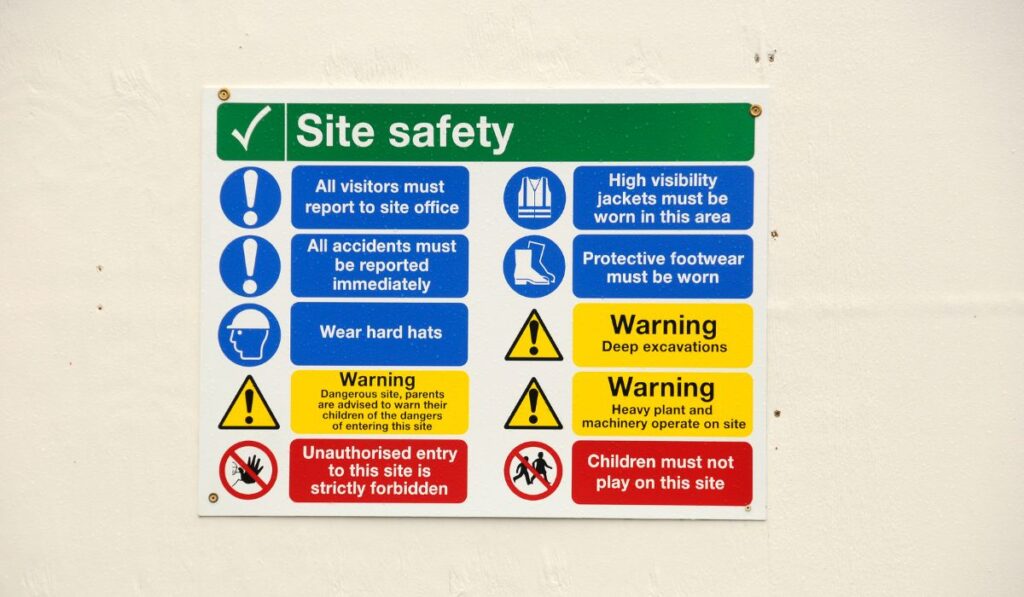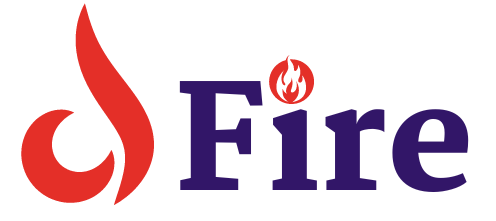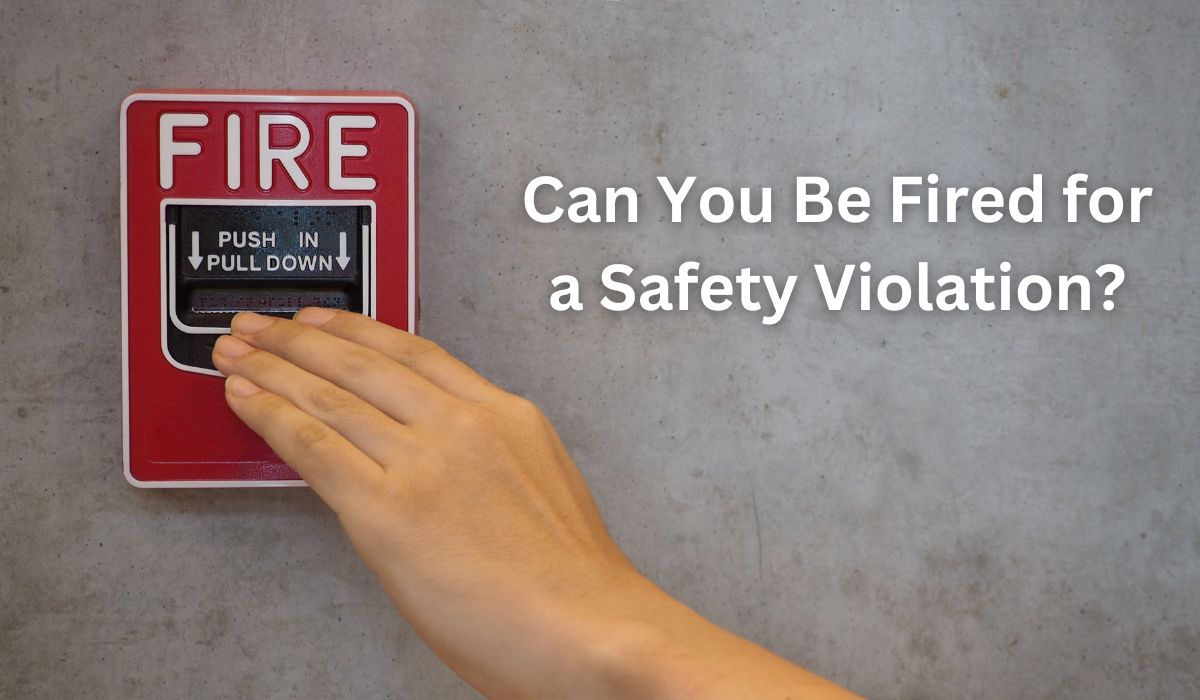Yes, you can be fired for a safety violation. Employers prioritize workplace safety and often enforce strict policies.
Workplace safety is a critical concern for both employees and employers. Safety violations can lead to severe consequences, including termination of employment. Companies implement safety protocols to protect everyone on-site and maintain a productive environment. Ignoring these protocols endangers individuals, disrupts operations, and can lead to financial losses.
Employers have the right to enforce disciplinary actions, including firing, to ensure compliance with safety regulations. Understanding the importance of workplace safety and adhering to established guidelines can prevent accidents and job loss. Prioritizing safety benefits everyone and contributes to a healthier, more secure work environment.

Introduction To Safety Violations
Workplace safety is a vital concern for both employees and employers. Ensuring a safe work environment helps prevent accidents and injuries. But what happens if safety rules are broken? This leads to safety violations, which can have severe consequences.
Importance Of Workplace Safety
Workplace safety protects employees from injuries and illnesses. It also helps maintain a productive and positive work environment. Employers must follow safety regulations to keep everyone safe. Violating these rules can lead to serious consequences.
- Protecting Employees: Safety measures keep workers safe from harm.
- Legal Compliance: Following safety laws prevents legal issues.
- Productivity: Safe environments promote better work efficiency.
Common Safety Violations
Many types of safety violations can occur in workplaces. Understanding these can help prevent accidents and ensure a safer environment.
| Violation | Description |
|---|---|
| Improper Use of Equipment | Using tools or machines incorrectly can cause accidents. |
| Lack of Personal Protective Equipment (PPE) | Not wearing safety gear like helmets or gloves increases risks. |
| Unsafe Work Practices | Ignoring safety procedures can lead to serious injuries. |
| Poor Housekeeping | Cluttered workspaces can cause trips and falls. |

Legal Framework
Understanding the legal framework around safety violations is crucial. It helps employees know their rights and responsibilities. This section covers the Occupational Safety and Health Administration (OSHA) regulations and state-specific laws.
Osha Regulations
The Occupational Safety and Health Administration (OSHA) sets safety rules. These rules are for workplaces across the United States. They aim to keep workers safe. Employers must follow these rules to avoid penalties.
If an employee breaks these rules, they could face consequences. This includes being fired. Employers must show the violation was serious. They must also prove that the employee knew the rule.
OSHA also protects workers who report safety issues. It’s illegal to fire someone for reporting a safety concern. This is known as whistleblower protection.
State-specific Laws
Each state has its own safety laws. Some states have stricter rules than OSHA. Employees should know both federal and state laws. This helps them understand their rights.
In some states, breaking safety rules can lead to immediate firing. In others, there might be steps before firing. These steps can include warnings or retraining.
Employers should clearly explain safety rules to their workers. They should also provide training. This helps prevent safety violations.
| Aspect | OSHA | State Laws |
|---|---|---|
| Scope | Nationwide | Varies by State |
| Penalties for Violations | Possible Firing | Immediate Firing or Steps Before Firing |
| Whistleblower Protection | Yes | Varies by State |
Knowing both OSHA regulations and state-specific laws is vital. It helps in understanding the consequences of safety violations.
Employer Responsibilities
Employers play a crucial role in ensuring workplace safety. Their responsibilities include providing safety training and maintaining a safe environment. These measures are essential to prevent accidents and keep employees safe.
Providing Safety Training
Employers must offer safety training to all employees. This training should cover potential hazards and safe work practices. Employees need to understand how to use safety equipment properly. Training sessions should be regular and up-to-date.
- Identify hazards in the workplace.
- Teach employees about personal protective equipment (PPE).
- Demonstrate emergency procedures like fire drills.
Safety training ensures everyone knows their roles. It helps prevent injuries and accidents. Well-trained employees can respond better to emergencies.
Maintaining A Safe Environment
Employers must maintain a safe working environment. This involves regular inspections and equipment maintenance. Work areas should be clean and organized. Hazards must be identified and corrected promptly.
| Action | Frequency |
|---|---|
| Inspect equipment | Weekly |
| Clean work areas | Daily |
| Check for hazards | Monthly |
Employers must also provide proper safety gear. This includes helmets, gloves, and eye protection. Proper signage should be displayed in hazardous areas.
- Conduct regular safety audits.
- Ensure adequate lighting in all workspaces.
- Provide first-aid kits and training.
Maintaining a safe environment reduces the risk of accidents. It shows that the employer cares about employee well-being.
Employee Rights
Understanding your employee rights is crucial if you face a safety violation at work. Knowing these rights can help you protect yourself and your job.
Right To A Safe Workplace
Every employee has the right to a safe workplace. This means your employer must provide a safe environment for you.
- Proper training
- Safety equipment
- Regular safety checks
Employers must follow OSHA regulations. These regulations ensure your safety and health at work.
Protection Against Retaliation
You also have protection against retaliation. Your employer cannot punish you for reporting safety issues.
This includes:
- Firing
- Demotion
- Pay cuts
If you face retaliation, you can file a complaint with OSHA. They will investigate and help protect your rights.
| Right | Description |
|---|---|
| Safe Workplace | Your employer must ensure a safe working environment. |
| Protection Against Retaliation | You cannot be punished for reporting safety violations. |
Grounds For Termination
Employees can face termination for violating safety rules at work. Understanding the grounds for termination helps in knowing your rights. Employers have policies to ensure a safe workplace. Breaching these policies can lead to serious consequences.
When Violations Lead To Firing
Not all safety violations lead to firing. The severity of the violation matters. Minor infractions may result in warnings or training. Major breaches, like ignoring safety protocols, can result in immediate termination. Repeated violations can also lead to firing.
- Minor infractions: Warning or training
- Major breaches: Immediate termination
- Repeated violations: Termination
Employers must document all safety violations. This ensures transparency and fairness in the termination process.
Due Process Requirements
Employees have rights even when facing termination. Due process ensures fair treatment. Employers must follow specific steps before firing an employee. These steps often include:
- Documenting the violation
- Providing a warning or notice
- Offering a chance to explain or correct behavior
Failure to follow due process can lead to legal issues for employers. It’s vital to understand these rights to protect yourself.
| Violation Type | Possible Consequence |
|---|---|
| Minor Infraction | Warning or Training |
| Major Breach | Immediate Termination |
| Repeated Violations | Termination |
Understanding the grounds for termination and due process helps navigate workplace safety issues.
Challenging A Termination
Challenging a termination for a safety violation can be daunting. Knowing your rights and steps to challenge them is crucial. This section covers how you can file a complaint and the legal recourse options available to you.
Filing A Complaint
If you believe your termination was unjust, you can file a complaint. Start by contacting your company’s Human Resources (HR) department. Explain your situation clearly and provide any evidence you have.
Here are steps to follow:
- Contact HR and explain your termination.
- Gather evidence such as emails or witness statements.
- Fill out any required forms provided by HR.
- Keep copies of all documents you submit.
Filing a complaint can help start an internal review. This may lead to a reconsideration of your termination.
Legal Recourse Options
If internal complaints don’t resolve the issue, legal options are available. You can contact a labor attorney for advice. They can guide you on the best steps to take.
Here are some legal recourse options:
- File a complaint with the Equal Employment Opportunity Commission (EEOC).
- Seek advice from a labor attorney.
- Consider filing a lawsuit for wrongful termination.
- Look into state-specific labor laws that may protect you.
Legal action can be complicated, so professional advice is essential. Make sure to gather all evidence and documents related to your case.
| Step | Action | Details |
|---|---|---|
| 1 | Contact HR | Explain your situation and gather evidence. |
| 2 | File Complaint | Submit all the required forms to HR. |
| 3 | Seek Legal Advice | Consult a labor attorney for guidance. |
| 4 | File with EEOC | Consider filing a complaint with the EEOC. |
These steps can help you navigate the complex process of challenging a termination. Always ensure you have all the necessary documents and evidence.
Preventing Safety Violations
Workplace safety is crucial for both employees and employers. Preventing safety violations helps maintain a secure work environment. It also reduces the risk of injuries and accidents. Employers must take proactive measures to ensure safety. Here are some key strategies to prevent safety violations.
Employee Training Programs
Effective employee training programs are essential for safety. Training helps employees understand safety rules and procedures. It also educates them on using safety equipment correctly. Regular training sessions keep everyone updated on new safety practices. This minimizes the chances of safety violations.
- Interactive training sessions
- Hands-on demonstrations
- Safety quizzes and tests
Regular Safety Audits
Conducting regular safety audits ensures compliance with safety standards. Audits help identify potential hazards in the workplace. They also provide an opportunity to fix these issues before they cause harm. Scheduled safety audits keep the workplace safe and secure.
| Audit Frequency | Key Focus Areas |
|---|---|
| Monthly | Equipment safety, emergency exits |
| Quarterly | Fire safety, chemical storage |
| Annually | Overall safety compliance |
Both employee training programs and regular safety audits are vital. They help prevent safety violations effectively. Employers should prioritize these measures to ensure a safe workplace.

Credit: www.calltherightattorney.com
Case Studies
Examining real-life case studies helps us understand the consequences of safety violations. These examples shed light on the actions taken by companies and the outcomes for employees. Let’s explore some notable cases.
Real-life Examples
Here are some examples of employees fired for safety violations:
| Case | Violation | Outcome |
|---|---|---|
| Case 1 | Ignoring safety protocol | Employee terminated |
| Case 2 | Failure to wear PPE | Employee terminated |
| Case 3 | Operating machinery improperly | Employee terminated |
Lessons Learned
From these cases, we learn valuable lessons:
- Safety protocols must be followed at all times.
- Proper use of Personal Protective Equipment (PPE) is crucial.
- Training on machinery operation is essential.
These lessons highlight the importance of adhering to safety guidelines. Companies take these violations seriously and act accordingly. Employees should always prioritize safety to avoid termination.
Frequently Asked Questions
What Is Wrongful Termination For Safety Reasons?
Wrongful termination for safety reasons occurs when an employee is fired for reporting unsafe working conditions or refusing unsafe tasks. This is illegal and violates labor laws. Employers cannot retaliate against employees for prioritizing safety.
Can You Discipline An Employee For Violating A Safety Rule?
Yes, you can discipline an employee for violating a safety rule. Ensure the disciplinary action aligns with your company’s policies.
Can An Employer Fire You For Reporting A Violation Of Osha Standards?
No, an employer cannot fire you for reporting OSHA violations. It is illegal and considered retaliation. You have the right to report unsafe conditions without fear of losing your job.
What Does Violation Of Safety Rules Mean?
Violation of safety rules means not following guidelines designed to protect individuals from harm. It can lead to accidents, injuries, and legal consequences. Always adhere to safety regulations to ensure a safe environment.
Conclusion
Ensuring workplace safety is crucial for both employees and employers. Violating safety rules can lead to termination. Understanding company policies and adhering to safety guidelines can protect your job. Always prioritize safety to maintain a secure work environment. By doing so, you contribute to a safer and more productive workplace.

I’m Abdus Sobur, a highly skilled and professional Fire Safety Officer with a passion for safeguarding lives and property. Over the course of my career, I’ve conducted numerous successful fire safety audits, earning a reputation for excellence in ensuring public safety.
In addition to my role as a Fire Safety Officer, I’m also dedicated to raising awareness about the importance of fire safety. Through my blog, I share insights into the functions of different fire safety equipment, aiming to empower individuals with the knowledge they need to protect themselves and their communities.
I’m driven by a deep commitment to promoting fire safety awareness and preventing fire-related incidents.

